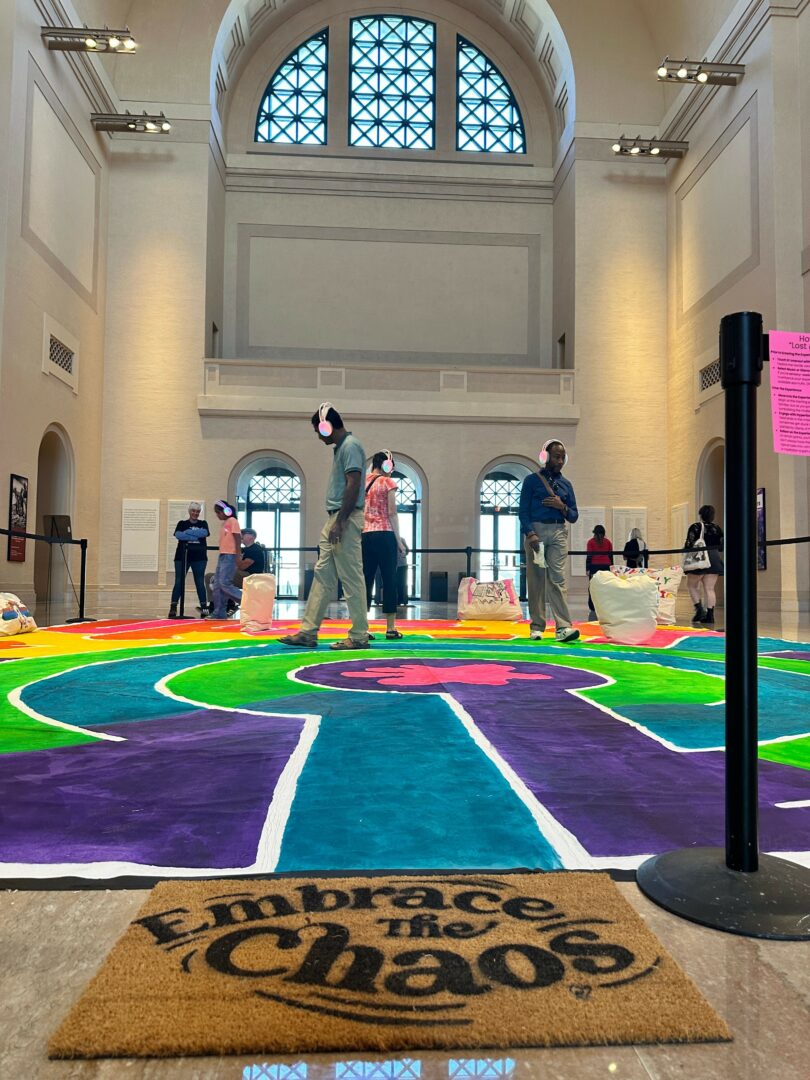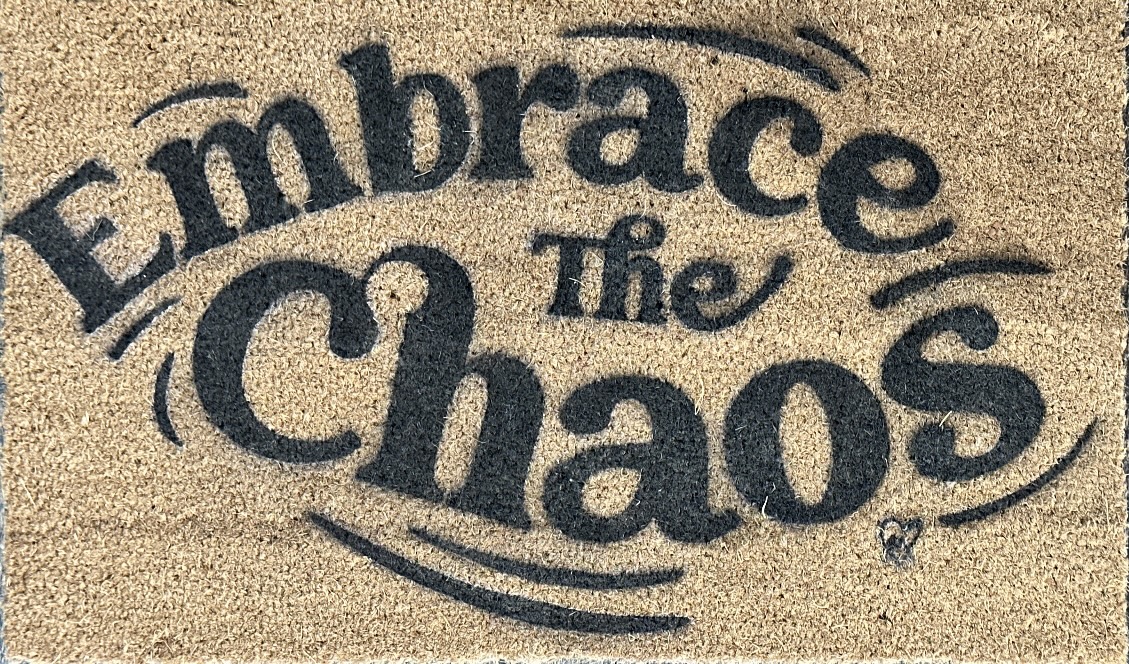We caught up with the brilliant and insightful Martha Valenta a few weeks ago and have shared our conversation below.
Martha, so good to have you with us today. We’ve always been impressed with folks who have a very clear sense of purpose and so maybe we can jump right in and talk about how you found your purpose?
I’ve always known I was an artist, but my focus on creating experiential pieces that promote self-acceptance and understanding of ADHD emerged through a series of significant events.
Touching the Van Gogh:
At eight, I touched a Van Gogh at the Saint Louis Art Museum, despite the internal battle of “Don’t touch it!” “I wonder what it feels like?” “DO NOT TOUCH IT!” “It seems so puffy, I wonder if it’s soft.” “You will get ARRESTED if you touch it!” This moment made me realize that my sensory-seeking, undiagnosed ADHD needed a model to engage with art more fully.
Experiencing Other Artists:
Visiting installations like Andy Warhol’s Silver Clouds and Yayoi Kusama’s Infinity rooms validated my unique ideas about art and showed me that art isn’t limited to paintings and sculptures. I knew then that interactive, immersive art was something I wanted to explore.
Snorkeling Revelation:
During a vacation with my daughter, I struggled with negative self-talk after a work setback. Snorkeling calmed me. When I spotted a brain coral, its curvy, mesmerizing, aperiodic patterns felt like a reflection of my own ADHD brain., leading me to begin to accept my beautifully inconsistent mind. This inspired my ADHD Brain Coral series.
Career Transition:
After my father passed, I faced heightened challenges at work due to my ADHD. My husband and I decided it was time for me to step back from my IT job and focus on art. I transitioned from digital pieces to tactile, laser-cut works and thick impasto paintings, channeling my memories into experiential art.
Interactive Projects:
This led to projects like Cash-tastrophe, where guests release their self-criticism through interaction, encouraging healing through engagement.
“Lost & Found Meditation”:
I also pitched larger ideas in grant requests and when I was approached by the Youth and Family Programming folks from Saint Louis Art Museum. One of those ideas has now come to fruition as “Lost & Found Meditation”, a multi-sensory, immersive 24-foot x 30-foot walking meditation labyrinth which morphs into a maze because ADHD folks have trouble meditating. In the dead ends of the maze there are various paintings created by clients of Pathways to Independence that have been turned into soft sculptures. These are hyperfocus areas, because often when we go off course, we find ourselves stuck in a hyperfocus. This piece also has an original score that was written for it (I worked with a local musician). And, there is a handheld tactile maquette. The way it was designed and developed it is fully inclusive and accessible. It debuted at Saint Louis Art Museum on October 11th, and now it’s traveling to various arts organizations, schools, and more until October 2025. Folks can request it through my website.
I know that this is my purpose because folks experience my art and then cry or ask for a hug. They tell me the tears are joyful—they suddenly don’t feel so alone and feel free to be who they are.


Great, so let’s take a few minutes and cover your story. What should folks know about you and what you do?
My name is Martha Valenta. I’m an artist who has a goal of helping other ADHD folks find self-acceptance.
As an artist and entrepreneur, I focus on creating immersive, experiential art that promotes self-acceptance and understanding of ADHD. My work blends personal narratives with interactive elements, inviting audiences to engage in meaningful ways. I believe art should not only be seen but also felt, touched, and experienced, making it inclusive and accessible to everyone, especially those who resonate with themes of neurodiversity.
What Makes My Work Special
What excites me most about my art is its ability to foster connection. I create spaces where people can explore their own feelings and experiences, especially around ADHD and mental health. Projects like Lost & Found Meditation allow participants to navigate a labyrinth which morphs into a maze, that reflects the challenges of meditation for those with ADHD. Through sensory engagement and interactive elements, viewers often find themselves moved, sharing their stories and emotions with me.
Community Impact
My work is rooted in a desire to build community and encourage dialogue around ADHD. I’ve seen firsthand how art can create safe spaces for people to accept themselves. The feedback I receive—tears of joy and requests for hugs—reinforces my belief that art has the power to heal and unite.
What’s New
I’m thrilled to announce that Lost & Found Meditation is now traveling to various arts organizations, schools, and community centers until October 2025. This allows more people to experience the installation and engage with the themes of ADHD in a tangible way. Additionally, I’m currently exploring new grant opportunities to expand my reach and develop future projects that continue to challenge the boundaries of traditional art.
I invite everyone to explore my work through my website, where you can learn more about my projects, upcoming events, and how to request installations. You can also purchase prints, originals, stickers, door mats, clothing, and more.

There is so much advice out there about all the different skills and qualities folks need to develop in order to succeed in today’s highly competitive environment and often it can feel overwhelming. So, if we had to break it down to just the three that matter most, which three skills or qualities would you focus on?
Reflecting on my artistic journey, three qualities stand out as particularly impactful: resilience, creativity, and empathy. Each has played a crucial role in shaping my path and helping me connect with others through my art.
1. Resilience
Navigating the ups and downs of both personal and professional life has required a great deal of resilience. The ability to bounce back from setbacks—whether it was struggling with ADHD, losing my father, or transitioning careers—has been vital.
Advice: Embrace challenges as learning opportunities. When faced with obstacles, remind yourself that each experience adds to your growth. Developing a support system of friends, mentors, or fellow artists can also provide encouragement during tough times.
2. Creativity
Creativity isn’t just about artistic skills; it’s also about thinking outside the box and approaching problems from new angles. My experiences with art installations and interactive projects have taught me to find innovative solutions that resonate with audiences.
Advice: Foster your creativity by exploring various mediums and techniques. Allow yourself to experiment without the fear of failure. Surround yourself with diverse influences—art, music, literature—and engage in brainstorming sessions with others to generate fresh ideas.
3. Empathy
Empathy allows me to connect deeply with my audience and understand their experiences. This quality has guided my approach to creating art that speaks to the challenges and joys of living with ADHD and mental health issues.
Advice: Practice active listening and seek to understand others’ perspectives. Engage in conversations about mental health and neurodiversity to broaden your understanding. Volunteering or collaborating with organizations focused on these topics can also deepen your empathy and enhance your artistic vision.
Conclusion
For those early in their journey, developing resilience, creativity, and empathy will lay a solid foundation for growth. Embrace your unique experiences and allow them to shape your art. Remember, your journey is personal, and each step contributes to the larger narrative you are creating.

How would you describe your ideal client?
My ideal client embodies a passion for art and a genuine interest in understanding the complexities of mental health and neurodiversity. Here are some key characteristics that define my ideal client:
1. Open-Mindedness
An ideal client approaches art with curiosity and a willingness to explore new perspectives. They appreciate the value of experiential and interactive art, recognizing that it can evoke emotions and provoke thought.
2. Connection to ADHD or Mental Health Themes
Clients who have personal experiences with ADHD or mental health challenges, whether directly or through loved ones, often resonate with my work. They understand the importance of self-acceptance and are drawn to pieces that reflect these themes.
3. Desire for Engagement
My ideal client seeks more than just decorative art; they want to engage with it on a deeper level. They appreciate installations that encourage participation and dialogue, as well as events that foster community and understanding around mental health.
4. Supportive and Collaborative
I thrive when working with clients who value collaboration. Ideal clients are supportive of my vision and willing to explore how we can work together to create meaningful projects or events that resonate with their audiences.
5. Commitment to Inclusivity
Clients who prioritize inclusivity and accessibility in their spaces and initiatives align with my values. They understand the importance of creating environments where everyone can engage with art and feel seen.
Contact Info:
- Website: https://www.marthavalenta.com/
- Instagram: https://www.instagram.com/martha.valenta
- Linkedin: https://www.linkedin.com/in/martha-valenta-artist/






Image Credits
Martha Valenta, Tim Meehan
so if you or someone you know deserves recognition please let us know here.




